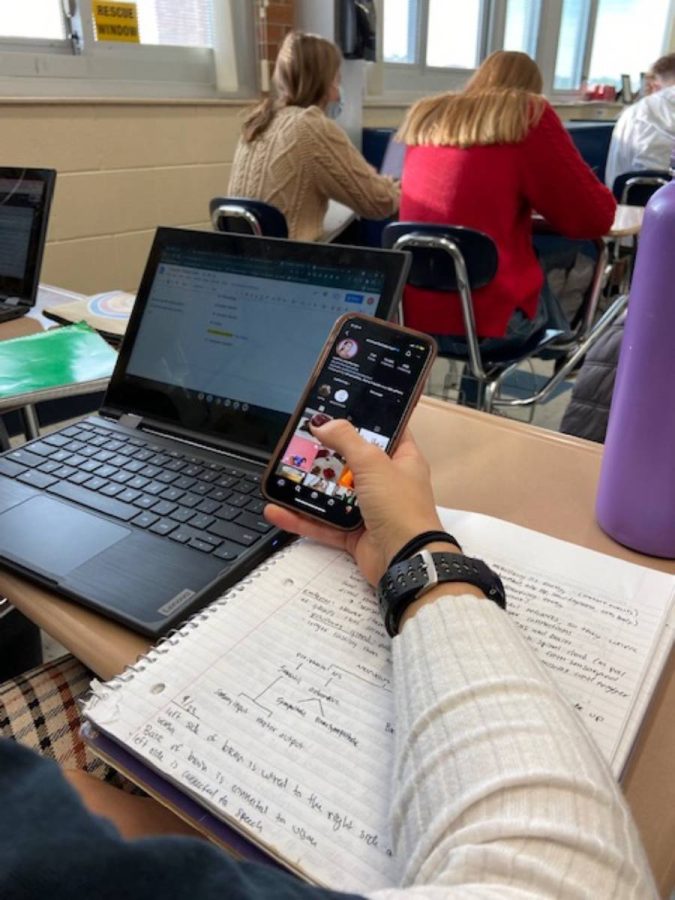A “phone addicted” generation coming off the pandemic
Credit: Photo illustration by Kendall Sloan
After a long period of time spent online many people relied on social media. Fast forward a year and a half, and many people have continued these habits.
November 22, 2021
In the past, attitudes surrounding social media have consistently been, to “cut-down” or “reduce usage” in order to be more productive. However, the pandemic pushed this attitude completely out the window, seemingly out of necessity when human contact was forbidden and social media was the only means of communication.
At this time however, as we slowly shift back to normalcy, it is no longer necessary to depend solely on social media for human interaction. So why hasn’t teen phone usage gone back down?
For many students, COVID officially became relevant on March 13th, 2020. Students had finished their second trimester exams and had arrived home expecting a four day weekend to mark the end of the 12 week period. However, students arrived home with a four week break awaiting them instead.
COVID-19 has continued to remain on the front burner of all our lives and we have had to adapt to many new changes in our day-to-day life.
For example, many of us had to adjust our means of communication in order to avoid physical exchanges and follow the guidelines put in place by the state. As a society, we turned to social media.
Social media became an outlet for human connection when human interaction was incredibly scarce.
“During the pandemic, I did do the facebook thing,” said English teacher Anne Lewis, “just to stay in touch with my people.”
Lewis recalls deleting social media as soon as she was able to contact her friends again, but statistically, she seems to be one of few.
According to Vox.com, a June 2020 report predicted that phone usage would go back down with the conclusion of the pandemic. However, here we are, October 2021 and technology use is not going down any time soon. Tik Tok and video making are now a part of daily life and seemingly viable career options, the Zoom calls and live streaming we utilized online are here to stay, and social media sites that were actually on a steady decline (Instagram and Facebook) have gained back their popularity.
“I feel like if I got rid of it [social media],” junior Reaghan Babrick continued, “I would get rid of a lot of ties I have with friends.”
This technology usage, even after the pandemic, has potential detrimental effects on an already “phone addicted” generation.
“I feel like it gets in people’s heads too much,” Knight Life social media editor Milo Turner said. “I feel like spending an entire year online has been so counterproductive.”
Part of the continued high usage of social media can be attributed to its utilization as a news source. Social media sites have become a main outlet for news and current events, in fact it is the number one reason why individuals log on to social media according to the blog GWI, People needed quick updates on the pandemic, and it was important that sites and creators catered to this need.
This need however, has also led to the popularization of the term “doom-scrolling,” continuous scrolling through headlines on the internet or social media, encountering negative headline after negative headline.
However, it is possible we are giving the pandemic too much credit. The reality is that yes, the pandemic has increased phone usage across the nation and is continuing to do so, but whether or not all of our phone usage can be attributed to the pandemic remains to be seen. Many individuals, including Anne Lewis, believe this change occurred a long time ago.
“There has been such a change in my students ability to think critically since the advent of social media, so not just the pandemic,” Lewis said.
Perhaps not all of our habits can be attributed to the pandemic, some we need to accept for ourselves.














